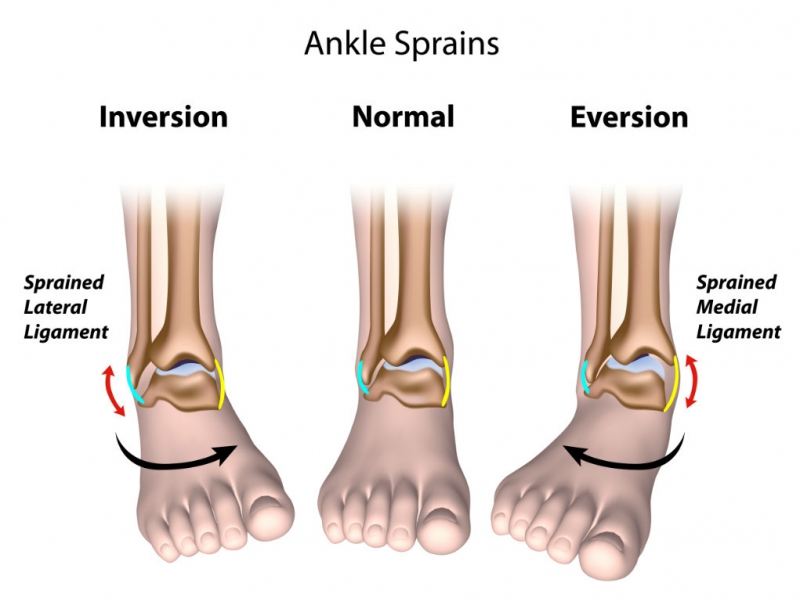What is it?
Your ankle has strong bands of fibrous tissue, called ligaments, either side which help keep your shin bones (tibia and fibula) on top of your foot. The most common ankle sprain is a ‘lateral ankle sprain’ which means damage to the outside of your foot. The most common ligament to be injured is the Anterior Talo-fibularLigament (ATFL). This ligament attaches the Fibula (outside of your leg) to the Talus (front outer part of your ankle).
How does it get injured?
Ankle sprains normally occur when you ‘roll’ your ankle over; in other words when the ankle rolls outwards but the foot turns inwards. This creates a large force on the ligaments which try to keep the bones together, and can cause them to stretch or even rupture. What does it feel like? Ankle sprains are graded from I-III. A mild ankle sprain may feel tender around the area of injury andthere may be some swelling and bruising but you will still be able to move your foot and walk on it. A severe ankle sprain may cause major swelling around the foot and ankle, and you may have bruising in a wider area – even to your toes. You may find it difficult to put weight through your foot and mayneed to use crutches for a while.
How is it diagnosed?
Your doctor or physiotherapist can diagnose an ankle sprain from your symptoms, mechanism of injury and also with some simple tests. If your ankle sprain is severe you may need an X-ray to rule out any broken bones as some times you can cause a fracture at the same time as a ligament sprain. Children always have X-rays with ankle sprains in case of growth plate damage. What should I do if I have sprained my ankle? When you first injure your ankle it is important to use ‘RICE’.
- Rest: Stop playing sport or walking on your foot and sit down
- Ice: Ice your foot with a bag of ice wrapped in a towel, or an ice pack for 48 hours
- Compression: See your physiotherapist or local pharmacist for a compression bandage or tubigrip.
- Elevation: Elevate your ankle to help decrease inflammation See your physiotherapist as soon as possible.
What can Back in Action Physiotherapy do?
Here at Back In Action we can educate you about your injury, set goals for your rehabilitation and give you approximate time frames for your recovery. If you have just injured your ankle we can help with pain management and making your ankle feel more stable. After the acute stage (the first 48 hours) the first priority is making sure you have full movement inyou ankle. We may use mobilisations, massage or other techniques to help with this. We will then gradually help to rebuild your strength and agility to get you back to where you want to be better, faster.

